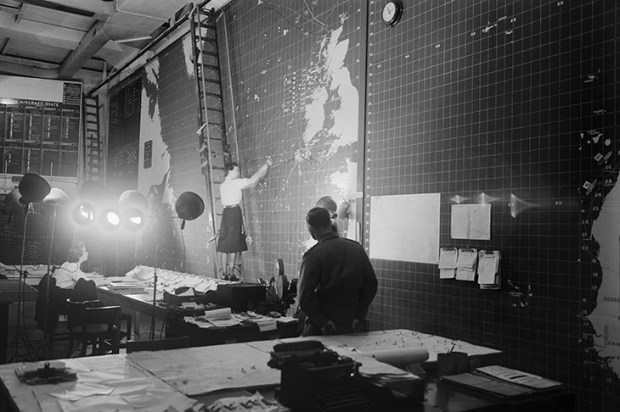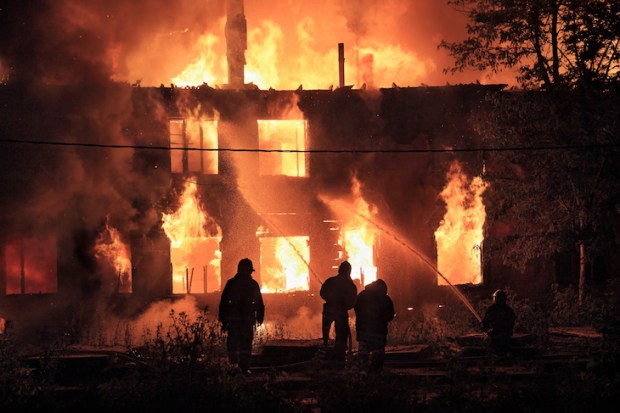Planning for the ‘war of the future’ is something generals and politicians have been doing for the past 150 years. The first and second world wars were the most anticipated conflicts in history. Military strategists and popular novelists all published the wars they envisioned in the decades before. Whether in the spycraft of Erskine Childers or the science-fiction of H.G. Wells, the reading public was warned of the carnage to come in many imaginative forms. But all that anticipation did little to avert the bloodbaths.
In this book, Lawrence Freedman offers a detailed analysis of how we have planned (or failed to plan) for conflict. Into the 20th century, military planning suffered from still focusing on the model of the Napoleonic wars, with the notion of the decisive battle. But warfare itself has moved on. From serried ranks of uniformed soldiers engaging on an open field, under rules of battle understood by all, we now have asymmetric warfare of nonstate actors and irregular skirmishes, or unending occupations.
And that’s only in the conflicts we acknowledge as wars. Of all the people who die violently each year, only a minority are killed in part of a recognised war. Freedman points out that even defining ‘war’ is difficult. For instance, the traditional concept of war as interstate hostility means that the Falklands conflict (death toll 900), involving two sovereign state belligerents, is classed as a ‘war’, while the Rwandan genocide (death toll 500,000+) is not.
The next war is also not always one of our choosing, but often someone else’s conflict we end up stepping into. Of the various civil wars and insurgencies taking place at any time on the planet, we can now watch what is happening in real time. Instead of reading news reports of something that happened weeks ago, we now have human rights abuses livestreamed on Facebook. The immediacy of humanitarian crises makes us demand that our leaders ‘do something’. What the ‘something’ ought to be remains open to debate. To not intervene is to be callous, disregarding the suffering of the helpless civilians of Whereveristan. But to intervene is imperalist, colonialist, and all the bad ists. The awkward truth is that ‘peacekeeping’ troops can never be truly neutral (their presence affects the outcome of a conflict, even by preventing anyone from ‘winning’), and NGO involvement can serve to prolong a conflict, distort the local economy, and keep a country in a state of dependence on external control.
Most of the conflicts of the last 50 years were civil wars or rebellions, rather than interstate wars. Knowing they are playing to an international audience also motivates warlords to use civilians as sympathetic victims — using them as human shields, or allowing massacres to take place, to cement their side’s image as the ‘injured party’ in the conflict. For the first time, there is advantage to be gained in playing the victim rather than the victor. The future of war is war for an audience.
We can also now focus on the individual victim. For soldiers, our wars have become less lethal. Not only do our troops get better medical care for battlefield injuries, they are unlikely to die of yellow fever or cholera during foreign conflicts. Historically, more soldiers died in war from sickness than bullets. It is only in the last few decades that soldiers’ deaths from battlefield injuries exceeded those from disease. Some of our soldiers don’t even need to go near a battlefield — they can operate Predator drones from a computer thousands of miles away.
Whether the targeted assassination model of drone warfare is ethical is still open to debate. At the very least, it’s hardly sporting to shoot someone who doesn’t even know you are there. It is in this sense against all the traditional rules of war. But at the same time, when faced with an enemy who doesn’t play by those rules, is it fair enough? Whether drone warfare alone will turn out to be decisive in any conflict is another matter. It is unclear yet whether picking off Isis leaders via drone-strike has been more effective than driving them from their strongholds by traditional means.
And as Freedman explains, drones themselves could turn out to be vulnerable if their systems were hacked by the enemy. Cyberwarfare is an increasing threat, in which foreign states, terror groups, or other mischief makers could knock out key infrastructure. We’ve already seen the danger with various large-scale hacks — usually done for money, such as the Wannacry ransomware attack. But the possibility of hostile forces taking over major utilities, or disabling our banking system, is very real. We could be at war with an enemy we didn’t even know existed.
In terms of more traditional conflicts, as more of the world becomes urban, so will more of its wars. Armies have long avoided cities, but the military nightmare of trying to capture and control a city of millions of inhabitants will become more often the reality. Already some of the world’s cities are in what could be defined as a state of conflict, although not classified as wars. In Rio, over 6,000 people were killed in 2016, by gangs or the police. The casualty rate among the security forces is higher than that of combatants in recent wars. But while terrorist groups are typically recognised in analyses of war, the activities of criminal groups are not. This means the 120,000 people killed as a result of drug cartels in Mexico over the last decade also don’t count as war casualties.
Freedman’s lucid style packs in plenty of detail of where things went wrong, and the classic mistake of always planning for the last war. It is not comforting reading. As with Donald Rumsfeld’s ‘known unknowns’, the war of the future may be the one we least expect.
Got something to add? Join the discussion and comment below.
Get 10 issues for just $10
Subscribe to The Spectator Australia today for the next 10 magazine issues, plus full online access, for just $10.
You might disagree with half of it, but you’ll enjoy reading all of it. Try your first month for free, then just $2 a week for the remainder of your first year.














Comments
Don't miss out
Join the conversation with other Spectator Australia readers. Subscribe to leave a comment.
SUBSCRIBEAlready a subscriber? Log in